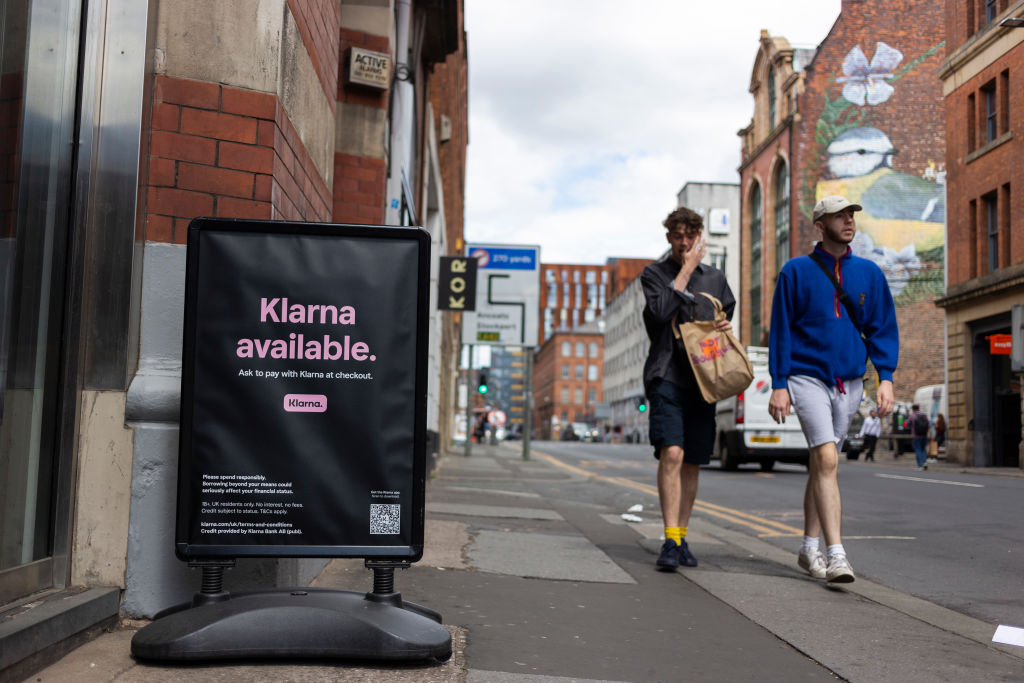At 200 terawatt hours a year, data centers around the world collectively consume more energy than some nations. The ever-growing cloud now has a greater carbon footprint than the airline industry and requires exhaustive, energy-intensive maintenance. Heat is a waste product of computation and must be consistently abated—most often, with air conditioning or cold water—to keep these cloud-based platforms running. The most advanced, “hyperscale” data centers, like those maintained by Microsoft (MSFT), Google and Amazon, have pledged to transition their sites to carbon neutrality via carbon offsetting, either through purchasing carbon credits or imposing internal carbon taxes. While critics warn against entrusting Big Tech to self-regulate, some internal carbon tax programs are helping large cloud-based companies meet, even exceed, their climate goals.
Klarna, the A.I.-powered “buy now, pay later” pioneer, recently announced it has committed another $2 million of funding to its Climate Transformation Fund as part of an internal carbon tax program. Klarna calculates the amount to be contributed annually by applying a carbon tax to each class of its carbon emissions by the ton. The Swedish company currently charges itself $200 per ton of carbon for scope 1 (direct emissions, such as company vehicles) and scope 2 (electricity purchases) emissions. This puts Klarna in line with the Environmental Protection Agency’s most recent estimates, which peg the “social cost of carbon” at $200.
“Money-for-ton” instead of “ton-for-ton”
“In this model, rather than buying carbon credits to ‘offset’ our emissions, we contribute the funds raised through our carbon tax to a portfolio of climate projects focused on maximizing overall climate impact,” Alexander Farsan, head of climate and environment at Klarna, told Observer. Klarna believes that setting internal carbon taxes is more effective for incentivizing companies to reach their sustainability goals and yields a more tangible impact on climate innovation compared to purchasing carbon offset credits.
“The logic of this ‘ton-for-ton’ offsetting creates incentives for actors in voluntary carbon markets to exaggerate the impact of their projects,” Farsan said. “We believe that our ‘money-for-ton’ approach is a powerful way of avoiding these incentives and focusing on the climate impact of the projects and initiatives we support.”
To date, Klarna has contributed $7 million to its Climate Transformation Fund, launched in 2021. The fund will support over 45 organizations tackling the climate crisis by the end of this year. Klarna’s funding comes on the back of reducing its emissions by 25 percent in 2023. Absolute scope 1 and 2 emissions fell by two thirds from 2022 to 2023, in part due to the consolidation of office spaces “as well as significant improvements in data quality, such as the collection of primary data for Klarna’s two largest offices in Stockholm and Berlin,” said Farsan.
Carbon prices vary greatly by industry and company
Companies’ internal carbon pricing initiatives are affecting 24 percent of global emissions, according to the World Bank. Implementing a high carbon price is projected to significantly slash emissions in botht governments and private sector. For example, a 2021 McKinsey study found that internal carbon pricing was a key factor in a European energy company’s decision to close several power plants because the internal charge on their carbon emissions cut into the expected profitability of those same plants.
A 2019 Brookings Institution report found that a $50-per-ton carbon tax that rises 5 percent each year would reduce emissions by 26-47 percent relative to 2005 benchmark levels by 2030 – up to 90 percent of the reductions needed to achieve the Biden Administration’s Paris Agreement goal. Some also say that imposing carbon pricing in the U.S. might also ensure American companies’ continued access to markets overseas. The EU recently announced its plans to impose a carbon border tax on carbon-intensive importers, though importers can avoid this tax if they can prove that a carbon price has already been paid during production.
However, internal carbon prices vary greatly by industry and company. The McKinsey study found that most firms set their internal carbon price below the minimum of $40 per ton recommended by economists. The median price set by technology, media and telecom companies is $13 per ton. By this metric Klarna is on the high end. Comparatively, Microsoft, one of the first companies to enact an internal carbon fee back in 2012, charges $15 per ton for scope 1 and 2, $100 for business travel, and $8 for the remainder of emissions from its value chain (scope 3).
And even in the most successful programs, tracking cloud emissions is a tricky task. Under the GHG Protocol, a global standard for measuring greenhouse gas emissions, if data centers outsource their workload to the cloud, it no longer falls under scope 1 emissions and instead is considered part of the supply chain in scope 3. “Scope 3 is a very challenging area to reckon with because it’s not under our direct control,” said Elizabeth Willmott, Microsoft’s Carbon Director, in a 2022 webinar on internal carbon fees. This is because a tech company’s cloud usage is impacted by both its own operations and its customer base. The more customers use their services to create, store, and transmit data, the larger the company’s scope 3 burden.
“A principal challenge for tech companies to limit their climate impact over the next decade is the rapid expansion of data center infrastructure that will be needed to meet growing demand for cloud and A.I. services,” said Farsan.

